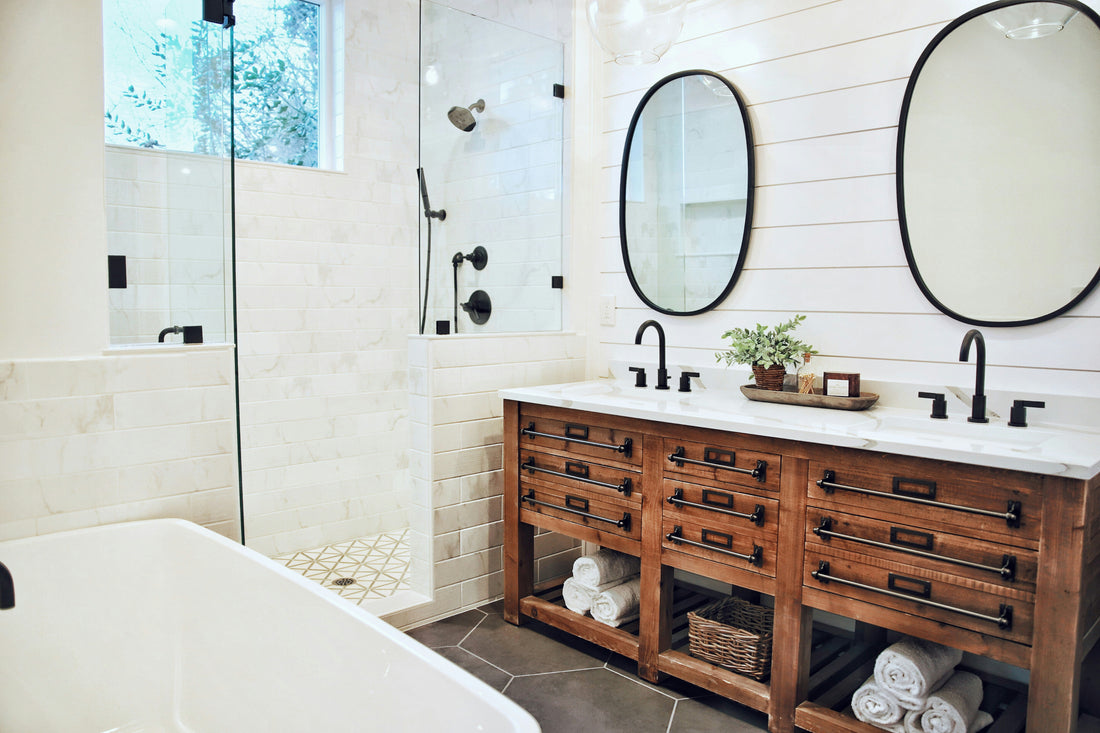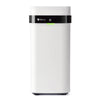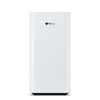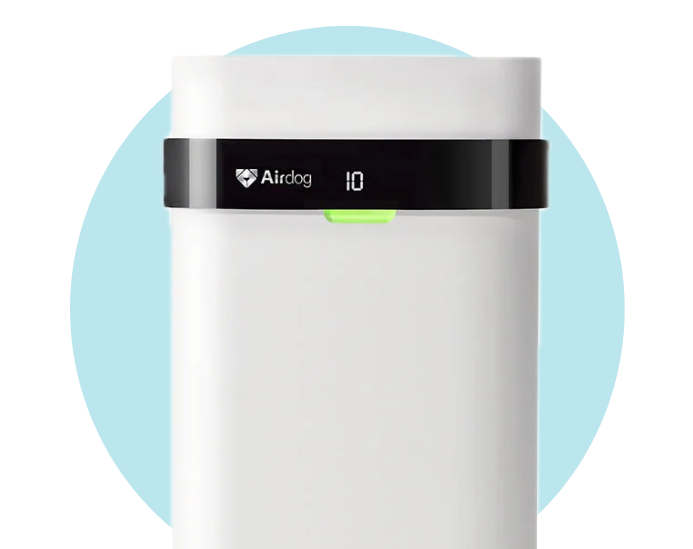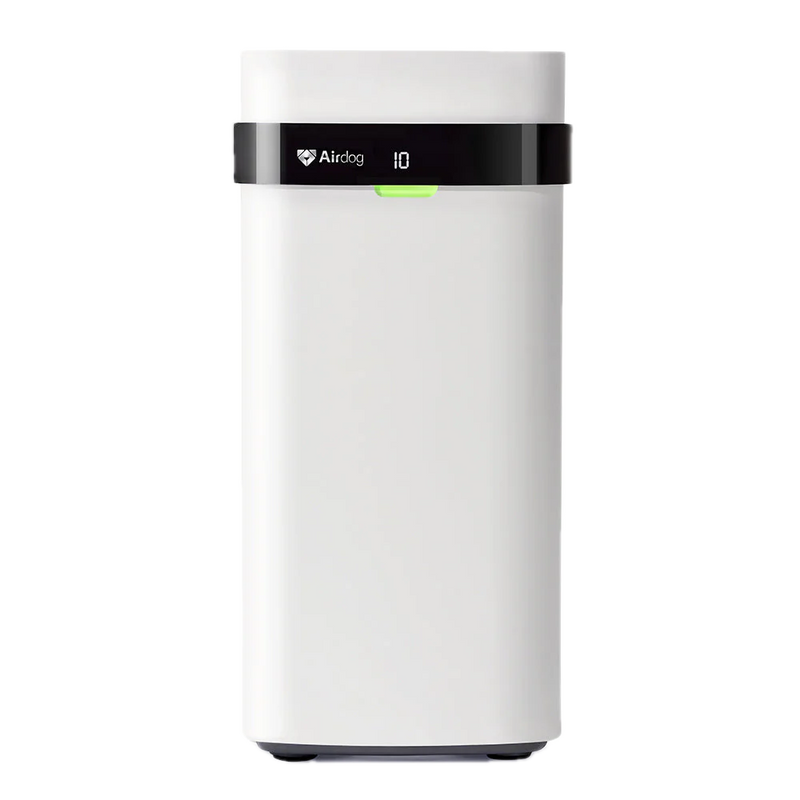If you've ever wondered what mold smells like, it's more than just an unpleasant odor. For many homeowners, identifying and combating mold remains a never-ending challenge, one that impacts not just the integrity of their homes but also their health and well-being. Mold thrives in damp, dark environments, breaking down organic matter and, in the process, releasing its characteristic odor. This odor, a signal of mold's presence, can vary from musty and earthy to sweet and damp, depending on the mold type and the surface it grows on.
This article serves as a comprehensive guide to recognizing, understanding, and addressing mold in your environment. Here, we explore:
-
The essence of what mold smells like
-
The health implications of mold exposure
-
Practical steps for mold identification and remediation
Whether you're a concerned parent, a health enthusiast, or simply someone looking to maintain a clean and safe home environment, understanding the scent of mold and its implications is the first step in taking control.
Understanding Mold and Its Common Types
Mold plays a crucial role in the decomposition of organic matter. Yet, when it invades our homes, it becomes a concern for health, aesthetics, and property integrity.
Biological Classification and Common Types
Mold belongs to the fungi kingdom, comprising over thousands of species, each with unique characteristics. However, a few types frequently make their way into our homes:
-
Cladosporium: This type is commonly found on fabrics, woods, and other damp, porous materials. It can cause allergies and respiratory problems.
-
Penicillium: Often blue or green, Penicillium thrives in water-damaged buildings and can produce mycotoxins, affecting air quality and health.
-
Aspergillus: This mold is found in extremely damp conditions and can lead to serious health issues, including lung infections and aspergillosis.
Mold vs. Mildew
Understanding the distinction between mold and mildew is essential for tackling each effectively:
-
Mold typically appears fuzzy or slimy and can be various colors such as black, green, red, or blue.
-
Mildew, on the other hand, usually presents as a powdery or fluffy white patch that turns black or brown over time.
Thriving Conditions
Areas of the home that are prone to moisture, such as bathrooms, kitchens, basements, and areas around leaks, are common mold hotspots. To thrive, mold requires:
-
Moisture, often from leaks, high humidity, or condensation
-
A food source, including wood, drywall, or other organic materials
-
Darkness, as most mold types do not thrive in UV light
-
Warmth, with temperatures between 60 and 80 degrees Fahrenheit being ideal
The Importance of Air Duct Cleaning
Air ducts are a prime location for mold growth due to the darkness, moisture, and organic materials present. Professional air duct cleaning, as highlighted by insights from ductdoctorbirmingham.com, plays a significant role in preventing mold in HVAC systems. Here's why it's crucial:
-
Removes spores: Cleaning helps eliminate mold spores from the air circulation system, improving indoor air quality.
-
Prevents health issues: By removing mold from HVAC systems, you reduce the risk of respiratory problems, allergies, and other health concerns associated with mold exposure.
-
Enhances efficiency: Clean air ducts operate more efficiently, reducing energy costs and preventing mold-friendly conditions by ensuring proper airflow and humidity levels.
Given the health implications and the potential damage to property, understanding mold’s nature, its common types, and the conditions under which it thrives is indispensable.
The Scent of Mold: Identifying Mold Through Its Odor
Mold's presence in our homes isn't just a visual nuisance; it announces itself with a distinctive odor, signaling its invasion into our living spaces. The scent of mold is crucial for early detection, potentially preventing extensive damage and health issues.
Characteristic Odors of Mold
Mold emits a range of odors that can act as the first alert to its presence in your home. These odors derive from microbial volatile organic compounds (MVOCs), which are gases produced by the mold's metabolism. The scent is not merely unpleasant; it's a sign of the decomposition process mold undertakes, breaking down organic materials in your home.
-
Musty: The most commonly reported smell, reminiscent of old books or damp, closed spaces. This scent is often the first indicator of mold growth.
-
Earthy: Some molds emit an odor that can be described as freshly turned soil, especially those thriving in plant-based materials.
-
Damp: Reflective of the mold's preferred environments, this smell can indicate both the presence of mold and the source of moisture aiding its growth.
Variability of Mold Smells
The scent mold emits can vary significantly, influenced by several factors:
-
Type of Mold: Different mold species produce different MVOCs, leading to a spectrum of scents. For instance, the odors from Penicillium can be different from those of Aspergillus.
-
Material it Grows On: The substrate mold grows on can affect the scent. Mold on wood might emit a different odor compared to mold on wallpaper or fabric.
-
According to the EPA, molds can emit musty, sweet, or earthy odors, underscoring the diversity of mold types and their interactions with various materials.
The Role of a Sensitive Nose
Detecting the presence of mold through its odor requires a sensitive nose, but it's essential to understand the limitations:
-
Subjectivity: Sensitivity to mold odors varies greatly among individuals. Some might detect a faint musty smell, while others may notice nothing.
-
Desensitization: Prolonged exposure to mold odors can lead to olfactory fatigue, where one becomes accustomed to the smell and less able to detect it.
-
Non-Visual Detection: Mold often grows in hidden places—behind walls, under floors, or above ceilings. Odor might be the only clue to its presence, necessitating further investigation.
Limitations of Relying Solely on Smell
While a musty odor is a helpful indicator of mold, relying solely on scent for mold identification comes with constraints:
-
Invisible Spores: MVOCs indicate mold activity, but they don't reveal the spore count or exact species present, which are crucial for assessing health risks.
-
Multiple Sources: Other sources in homes, such as damp clothing or pet odors, can mimic or mask mold smells, leading to potential misidentification.
-
Necessity for Professional Assessment: Given these limitations, identifying a mold problem and its severity often requires professional evaluation beyond scent detection alone.
Health Implications of Mold Exposure
From the subtle onset of allergic reactions to the potential development of severe respiratory conditions, understanding the full spectrum of health risks associated with mold exposure is crucial. This section delves into the variety of health effects linked to mold, as reported by the CDC and the EPA, and discusses the broader impact on overall well-being.
Allergic Reactions and Respiratory Issues
-
Common Symptoms: Mold exposure often triggers allergic reactions, which can manifest as sneezing, runny nose, red eyes, and skin rash. Asthma sufferers may experience exacerbated symptoms or more frequent asthma attacks.
-
Mold Species and Allergens: Certain mold species are known allergens. For example, Alternaria can cause allergic responses when inhaled, while Aspergillus may lead to severe asthma attacks.
-
Long-Term Exposure Effects: Prolonged exposure to mold can lead to more significant respiratory problems. The CDC highlights that continuous exposure may irritate the lungs, throat, and nose, even in individuals who are not allergic to mold.
Severe Health Outcomes like Aspergillosis
-
Invasive Infections: In individuals with weakened immune systems, exposure to mold strains such as Aspergillus can lead to aspergillosis—a severe infection that can invade the lungs or other organs.
-
Symptom Severity: Symptoms of aspergillosis can range from mild wheezing to coughing up blood, highlighting the critical nature of addressing mold issues promptly.
Non-Allergic Health Effects
-
Irritation in Non-Allergic Individuals: The EPA notes that mold exposure can cause eye, skin, nose, throat, and lung irritation in individuals without mold allergies. This broadens the scope of concern to virtually everyone in an affected environment.
-
Potential for Toxic Effects: Some molds produce mycotoxins that can lead to more severe health issues if ingested, inhaled, or come into contact with the skin. Though more research is needed, the presence of these toxins in indoor environments is a significant concern.
Psychological Effects and Quality of Life
-
Mental Health Concerns: Emerging studies suggest a link between mold exposure and psychological effects, including symptoms of depression. The stress of living in a mold-infested environment can also exacerbate anxiety and stress levels.
-
Impact on Daily Life: Beyond physical health, mold can significantly impact quality of life, affecting everything from comfort and sleep quality to overall satisfaction with one's living environment.
Mold Detection and Testing Methods
Detecting and testing for mold in your home are crucial steps to ensuring a healthy living environment, especially for families concerned about health and wellness. This section offers a comprehensive guide on mold detection and testing methods, underscoring the importance of moisture control as advised by experts at Morehead State University.
Visual Inspections for Signs of Mold
-
Identify Discoloration or Water Damage: Regularly inspect your home for signs of discoloration on walls, ceilings, and floors. Water stains or patches that appear darker than their surroundings may indicate moisture problems that could lead to mold growth.
-
Look for Visible Mold Growth: Mold can appear in a variety of colors, including black, green, white, or orange. It may look fuzzy, slimy, or powdery. Common areas to check include bathrooms, basements, around windows, and under sinks.
-
Check Hidden Areas: Mold often thrives in hidden places. Inspect under carpets, behind wallpaper, inside ductwork, and in attic insulation. Use a flashlight to help spot mold in these less visible areas.
Use of Home Mold Testing Kits
-
Understanding Mold Testing Kits: Home mold testing kits can be a preliminary tool for detecting mold. However, they should not replace professional assessment, as they vary in accuracy and may not identify all types of mold.
-
Types of Kits: Some kits require you to collect a sample and send it to a lab for analysis, while others include a petri dish that captures mold spores from the air. Carefully follow the instructions to ensure the most accurate results.
-
Interpreting Results: If a home test kit indicates the presence of mold, consider it a sign to investigate further. Not all molds are harmful, but testing can't always distinguish between types. Use positive results as a cue to seek professional help.
Professional Mold Assessment
-
When to Call Professionals: If you notice a persistent musty odor, see visible mold growth, or have recently experienced water damage, it's time to call in a mold assessment professional. This is especially important if you or family members have health issues that could be exacerbated by mold exposure.
-
What to Expect: A professional mold assessment goes beyond simple testing. Experts will inspect your home, use specialized equipment to measure moisture levels, and take samples for laboratory analysis. They can also identify the moisture source causing the mold growth.
-
Choosing a Professional: Look for certified mold inspectors with experience and good reviews. They should provide a detailed report of their findings and recommended remediation strategies.
Identifying and Addressing the Moisture Source
-
Significance of Moisture Control: According to Morehead State University, controlling moisture is the most effective way to prevent mold growth. Without addressing the underlying moisture issue, mold will likely return even after remediation.
-
Common Moisture Sources: Leaky pipes, roof leaks, high humidity, and condensation can all contribute to mold problems. Use dehumidifiers in damp areas, ensure proper ventilation, and fix leaks promptly.
-
Preventative Measures: Regular maintenance checks can prevent many moisture problems. Clean and inspect gutters, downspouts, and HVAC systems to ensure they are directing water away from your home.
Effective Mold Remediation Strategies
Mold remediation involves more than just a quick clean-up; it requires a strategic approach to remove mold safely and effectively while preventing its return. For families aiming to maintain a healthy home environment, understanding the proper techniques and precautions for mold remediation is essential. This section provides actionable advice, emphasizing the use of EPA-recommended cleaning agents, the significance of fixing water leaks, and the importance of controlling humidity levels within the home.
Preparing for Mold Remediation
-
Wear Protective Gear: Before tackling mold, ensure you wear proper protective equipment, including gloves, N95 masks, and eye protection. Mold spores can irritate the skin and respiratory system, making protective gear a necessity.
-
Ensure Proper Ventilation: Open windows and doors to allow fresh air to circulate during and after the remediation process. If possible, use fans to direct air outside, reducing the concentration of mold spores indoors.
-
Isolate the Affected Area: Seal off the area where mold removal will occur, using plastic sheeting and tape. This containment helps prevent mold spores from spreading to other parts of the home during the cleanup process.
Step-by-Step Remediation Processes
-
Identify and Fix the Moisture Source: Before any cleanup, identify the moisture problem that allowed mold to grow. Fix leaks, address condensation issues, and ensure proper drainage around the home's foundation to prevent future mold growth.
-
Remove Water-Damaged and Mold-Infested Materials: Porous materials like carpet, drywall, and insulation that have mold growth need to be removed and disposed of properly. Bag these materials to prevent the spread of spores.
-
Clean Non-Porous Surfaces: Use EPA-recommended cleaning agents to scrub mold off hard surfaces such as metal, glass, and plastic. Avoid using bleach alone, as it does not prevent mold from returning and can pose health risks.
-
Dry the Area Thoroughly: After cleaning, dry the area completely to eliminate any remaining moisture. Use dehumidifiers and fans to accelerate the drying process.
-
Apply Mold-Inhibiting Solutions: Once the area is dry and clean, apply mold-inhibiting solutions to prevent mold from returning. Follow the manufacturer's instructions for application.
Controlling Humidity and Preventing Future Growth
-
Maintain Low Indoor Humidity: Use dehumidifiers in damp areas of the home and maintain indoor humidity levels below 60%. This level of humidity discourages mold growth.
-
Ventilate High-Moisture Areas: Ensure bathrooms, kitchens, and laundry rooms have adequate ventilation to control moisture. Use exhaust fans that vent to the outside.
-
Regular Inspections: Regularly inspect your home for signs of water damage or mold, especially in prone areas like basements, attics, and under sinks. Early detection allows for quicker remediation and less extensive damage.
Addressing Mold with Airdog
Mold detection and remediation are crucial steps in ensuring a healthy home environment, but prevention remains the best long-term strategy. This is where Airdog can help. Our advanced air purifiers utilize cutting-edge technology to capture airborne mold spores before they have a chance to settle and grow. By continuously filtering the air and removing harmful contaminants, Airdog helps create a cleaner, healthier indoor space. Additionally, maintaining optimal humidity levels is essential in preventing mold growth, and Airdog’s MOI humidifier provides precise humidity control to keep moisture at safe levels. With Airdog’s innovative air quality solutions, you can breathe easier, knowing your home is safeguarded against mold and other airborne threats.
Conclusion
Mold is more than just an unsightly nuisance—it poses real risks to both property and health. By combining regular home inspections, moisture control, and air purification, you can significantly reduce the likelihood of mold infestations. Investing in high-quality air purifiers like Airdog ensures that airborne mold spores are efficiently removed, helping to create a healthier indoor environment for you and your family. Taking proactive steps today will protect both your home and your well-being in the long run.

